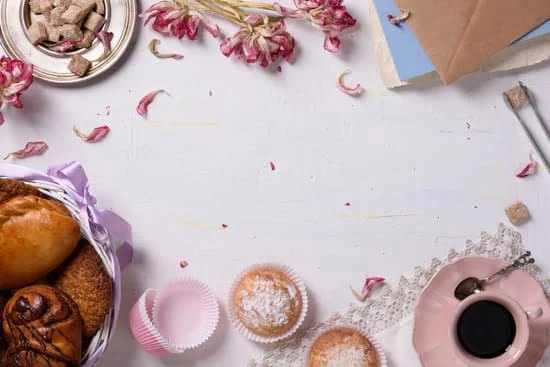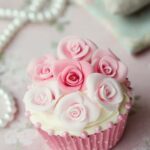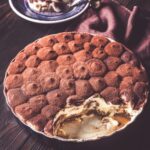Are you looking for a fun and delicious way to celebrate Easter? Learn how to decorate a lamb cake for Easter with our helpful guide. The tradition of baking lamb-shaped cakes has been a long-standing custom in many cultures, symbolizing the sacrifice and resurrection of Jesus Christ. In this article, we will explore the significance of lamb cakes in Easter traditions and provide you with step-by-step instructions on how to create your own beautiful lamb cake.
The Easter season is a time for joy, renewal, and celebration, and what better way to commemorate the holiday than by creating a stunning centerpiece for your table? Whether you are a seasoned baker or a novice in the kitchen, decorating a lamb cake can be a fun and rewarding experience. From choosing the right mold to adding the finishing touches, we will walk you through each step of the process, offering tips and tricks along the way.
In the following sections, we will cover everything you need to know about decorating a lamb cake for Easter. We’ll start by discussing how to choose the right lamb cake mold and then move on to baking the perfect cake. We’ll also explore essential tools and techniques for decorating your cake, as well as creative ideas for frosting and icing.
Finally, we’ll share tips for displaying your masterpiece at your Easter gathering and troubleshoot common problems that may arise during the decorating process. Get ready to impress your friends and family with a beautifully decorated lamb cake this Easter.
Choosing the Right Lamb Cake Mold
When it comes to making a lamb cake for Easter, choosing the right cake mold is crucial. The shape and size of the mold will determine the final look of your cake, so it’s important to choose wisely. Here are some tips and tricks for finding the perfect lamb cake mold.
The first thing to consider when choosing a lamb cake mold is the size. Think about how many people you’ll be serving and whether you want leftovers. A larger mold will yield a bigger cake, while a smaller one will result in a more petite lamb cake. Consider your serving needs before making a decision.
Another factor to consider is the material of the mold. Traditional metal molds are durable and conduct heat well, which can result in more evenly baked cakes. Silicone molds are flexible, making it easier to remove the cake once it’s baked, but they may require extra support during baking to hold their shape. Consider your level of comfort with different materials before making your choice.
If you’re feeling particularly creative, look for a lamb cake mold that includes intricate details in its design. Some molds come with decorative features like floral patterns or textured fur, which can add an extra element of charm to your finished cake. Keep an eye out for these special touches if you want to make your lamb cake truly stand out.
Overall, taking the time to choose the right lamb cake mold is an essential step in creating a beautiful and delicious centerpiece for your Easter celebration. With these tips and tricks in mind, you’ll be on your way to finding the perfect mold for your homemade masterpiece.
Consider Size and Servings
When choosing a lamb cake mold, think about how many people you need to serve and whether or not you want leftovers.
Material Matters
Consider whether traditional metal molds or flexible silicone molds would work best for you based on their baking benefits and ease of use.
Look for Unique Details
Search for molds that include decorative features if you want something extra special in terms of design for your Easter lamb cake creation.
Baking the Perfect Lamb Cake
Creating a moist and delicious lamb cake for Easter is an essential part of the holiday tradition. With the right recipe and technique, you can impress your guests with a beautifully crafted dessert that tastes as good as it looks. Follow these step-by-step instructions to bake the perfect lamb cake for your Easter celebration.
Choose the Right Recipe
The foundation of any great lamb cake is a moist and flavorful cake batter. Consider using a traditional pound cake recipe, which tends to hold its shape well during baking. Alternatively, you can use a basic vanilla or chocolate cake recipe and add extra moisture with ingredients like sour cream or buttermilk.
Prepare Your Lamb Cake Mold
Before you start mixing your batter, it’s important to properly prepare your lamb cake mold. Make sure to thoroughly grease and flour the mold to prevent sticking. You can also use non-stick cooking spray or a baking spray that includes flour for added convenience.
Baking and Cooling
Once your batter is mixed and your mold is prepared, carefully pour the batter into the lamb-shaped mold, making sure not to overfill. Bake the cake according to your recipe’s instructions, keeping an eye on it for any signs of over-browning or uneven baking. After baking, allow the cake to cool in the mold for a few minutes before gently turning it out onto a wire rack to cool completely.
Following these steps will ensure that you have a perfectly baked lamb cake as the canvas for your Easter decorating masterpiece.
Decorating Basics
Decorating a lamb cake for Easter can be a fun and creative way to celebrate the holiday. Whether you’re a beginner or an experienced baker, there are essential tools and techniques that can help you achieve a beautifully decorated lamb cake. In this section, we will discuss the key elements you’ll need and the basic techniques for decorating your lamb cake.
First and foremost, it’s important to have the right tools for decorating your lamb cake. Some essential tools include piping bags, various tips for creating different designs, offset spatulas for smoothing out frosting, food coloring for tinting icing, and small brushes for adding details. These tools will help you execute different decorating techniques and achieve professional-looking results.
When it comes to decorating techniques, there are several options to consider. One popular method is using buttercream frosting to cover the entire cake and then using piping bags with different tips to create texture and details such as fur or facial features.
Another option is fondant, which can be molded into various shapes and used to cover the cake or create intricate decorations like flowers or bows. Additionally, using edible decorations such as candy or sprinkles can add a festive touch to your lamb cake.
To begin decorating your lamb cake for Easter, start by choosing a technique that best suits your skill level and desired outcome. Practice piping designs on parchment paper before applying them to the cake, and don’t be afraid to experiment with different colors and textures. The most important thing is to have fun with the decorating process and create a beautiful centerpiece for your Easter celebration.
These essential tools and techniques are just the beginning of how to decorate a lamb cake for Easter. With some practice and creativity, you can adorn your lamb cake with charming details that will delight your guests and become a cherished tradition in your holiday celebrations.
Frosting and Icing
When it comes to decorating a lamb cake for Easter, the frosting and icing are crucial elements that can take your cake from bland to beautiful. Here are some creative ideas to help you make your lamb cake a centerpiece of your Easter celebration:
1. Whipped cream frosting: A light and fluffy whipped cream frosting can give your lamb cake a soft and delicate appearance. To create this type of frosting, simply beat heavy cream with powdered sugar and vanilla extract until stiff peaks form. You can then use a piping bag fitted with a star tip to create swirls and rosettes on the surface of the cake, giving it a charming and elegant look.
2. Fondant accents: Using fondant to create decorative accents for your lamb cake can take its appearance to the next level. You can roll out different colors of fondant to create flowers, bows, or even tiny lambs to adorn the surface of the cake. Fondant is versatile and easy to work with, making it an ideal choice for adding intricate details to your Easter lamb cake.
3. Pastel-colored icing: Easter is often associated with pastel colors, so consider using pastel-colored icing to decorate your lamb cake. You can create a simple glaze using powdered sugar and milk, then add food coloring in soft shades of pink, yellow, blue, or green. Drizzle the icing over the top of the lamb cake and let it cascade down the sides for a whimsical and festive effect.
Remember that when it comes to frosting and icing your lamb cake for Easter, creativity is key. Don’t be afraid to experiment with different techniques and designs to make your cake truly unique and eye-catching at your holiday gathering. With these creative ideas, you’ll be sure to impress your guests with a beautifully decorated lamb cake that perfectly captures the spirit of Easter.
Adding the Finishing Touches
Decorating a lamb cake for Easter is not only a tradition, but also an art form that allows for creativity and imagination. Once you have baked and frosted your lamb cake, it’s time to add the finishing touches to truly make it stand out as the centerpiece of your Easter gathering. Here are some decorative elements and ideas to take your lamb cake to the next level:
1. Fresh Flowers: Visit your local florist or garden to pick out some small, edible flowers to adorn your lamb cake. Gently wash the flowers and carefully place them on the frosted surface of your cake for a beautiful and natural touch.
2. Candy Decorations: Consider using colorful candy decorations such as jellybeans or pastel-colored chocolate eggs to create a festive and playful vibe for your lamb cake. You can arrange the candies around the base of the cake or even create a little “Easter egg hunt” scene on top of the lamb’s back.
3. Greenery and Herbs: Sprigs of fresh herbs like mint or rosemary can add a touch of elegance and fragrance to your lamb cake. Simply wash and dry the herbs, then tuck them into the frosting around the base or strategically place them on top for a refined look.
Incorporating any of these decorative ideas will surely elevate your lamb cake into a work of art that will impress all of your guests. Get creative with different combinations of elements or come up with your own unique touches to make this Easter dessert truly unforgettable.
Displaying Your Lamb Cake
When it comes to Easter traditions, the lamb cake holds a special significance. Not only is it a delicious dessert, but it also symbolizes the Lamb of God in Christian religious beliefs. Therefore, presenting your lamb cake at your Easter gathering is an important part of the celebration. Here are some tips for displaying your masterpiece and making it the centerpiece of your Easter table.
First and foremost, choose a beautiful and festive cake stand to display your lamb cake. A decorative stand can elevate the overall look of the cake and add an elegant touch to your Easter spread. You can opt for a classic white or pastel-colored stand, or go for something more elaborate with intricate designs or patterns.
Another great way to enhance the presentation of your lamb cake is by incorporating fresh flowers or greenery into the display. Surrounding the cake with vibrant spring blooms like daisies, tulips, or hydrangeas can bring a pop of color to the table and create a visually stunning arrangement. Additionally, adding some greenery such as eucalyptus leaves or sprigs of herbs can lend a natural and earthy feel to the display.
Lastly, consider adding some decorative elements around the base of the cake stand to tie everything together. This could include colorful Easter eggs, small figurines of lambs or bunnies, or even some themed decorations like mini baskets or faux grass. These finishing touches will complete the look and make your lamb cake display truly eye-catching.
| Displaying Tips | Additional Notes |
|---|---|
| Choose a decorative cake stand | White or pastel colors work well |
| Incorporate fresh flowers or greenery | Daisies, tulips, eucalyptus leaves are great options |
| Add decorative elements around the base | Easter eggs, figurines, themed decorations |
Troubleshooting and Tips
Decorating a lamb cake for Easter can be a fun and rewarding activity, but it’s not without its challenges. From frosting mishaps to structural issues, there are several common problems that can arise when decorating a lamb cake. Fortunately, with the right tips and tricks, you can troubleshoot these issues and create a beautiful centerpiece for your Easter celebration.
One common problem when decorating a lamb cake is getting the frosting or icing to adhere properly to the cake. To ensure that your frosting stays put, make sure that the cake is completely cooled before applying any decorations.
Additionally, lightly brushing the surface of the cake with a simple syrup or sugar water solution can help the frosting stick better. If you’re using fondant or gum paste decorations, be sure to attach them to the cake while the frosting is still slightly tacky for best results.
Another issue that may arise when decorating a lamb cake is creating smooth and even surfaces on the cake. To achieve a flawless finish, consider investing in an offset spatula and bench scraper. These tools can help you spread and smooth icing more evenly, resulting in a professional-looking final product.
Finally, structural problems such as sagging or collapsing can occur when decorating a lamb cake if it’s not properly supported. Make sure to use dowels or toothpicks to support any particularly heavy decorative elements, such as fondant ears or chocolate shavings. This will help prevent any mishaps during transport or display.
| Troubleshooting Tips | Solutions |
|---|---|
| Frosting not sticking | Ensure cake is fully cooled before decorating; lightly brush surface with simple syrup |
| Uneven surfaces | Use offset spatula and bench scraper for smoother application of icing |
| Structural issues | Support heavy decorations with dowels or toothpicks |
Conclusion
In conclusion, creating a beautiful and delicious lamb cake for Easter is a wonderful way to add a special touch to your holiday celebration. From the significance of lamb cakes in Easter traditions to choosing the right mold and mastering the art of decorating, there are many key points to consider when undertaking this baking project.
By following the tips and techniques outlined in this article, you can create a show-stopping centerpiece for your Easter gathering that will wow your family and friends.
The first step in decorating a lamb cake for Easter is finding the perfect mold. Tips and tricks for choosing the right mold were discussed, ensuring that you have a solid foundation for your creation. Once you have baked the perfect cake using step-by-step instructions, it’s time to focus on decorating basics, frosting and icing ideas, as well as adding finishing touches to make your lamb cake stand out.
No matter what decorative elements or frosting techniques you choose, remember that your lamb cake is not only a delicious dessert but also a work of art. Displaying your masterpiece at your Easter gathering is an opportunity to showcase your creativity and baking skills. Finally, by keeping common problems and solutions in mind, you can troubleshoot any issues that may arise during the decorating process.
Incorporating these tips and techniques into your own baking process will surely result in an impressive and beautifully decorated lamb cake for Easter. So go ahead and get creative with decorations, frosting flavors, and finishing touches – it’s time to wow everyone with your stunning masterpiece. And now that you’ve learned how to decorate a lamb cake for Easter like a pro, don’t forget to indulge in the joy of creating something special for this meaningful holiday.
Frequently Asked Questions
What Is the Tradition of Lamb Cake at Easter?
The tradition of the lamb cake at Easter has its origins in Eastern Europe, where lamb symbolizes innocence and purity, reflecting the Christian belief in Jesus as the “Lamb of God.”
How to Decorate a Cake for Easter?
Decorating a cake for Easter can include using pastel colors, floral designs, and Easter-themed decorations like bunnies, eggs, or chicks. Some people also use edible flowers for a festive touch.
Which Shape Has One Very Traditional Easter Cake?
One very traditional shape for an Easter cake is the “Easter nest” or “bird’s nest” cake. This type of cake is usually round with a hollowed-out center to resemble a nest, and decorated with candy eggs or other small treats to mimic bird eggs in a nest.

Welcome to our cake decorating blog! My name is Destiny Flores, and I am the proud owner of a cake decorating business named Cake Karma. Our mission is to provide delicious, beautiful cakes for all occasions. We specialize in creating custom cakes that are tailored specifically to each customer’s individual needs and tastes.





